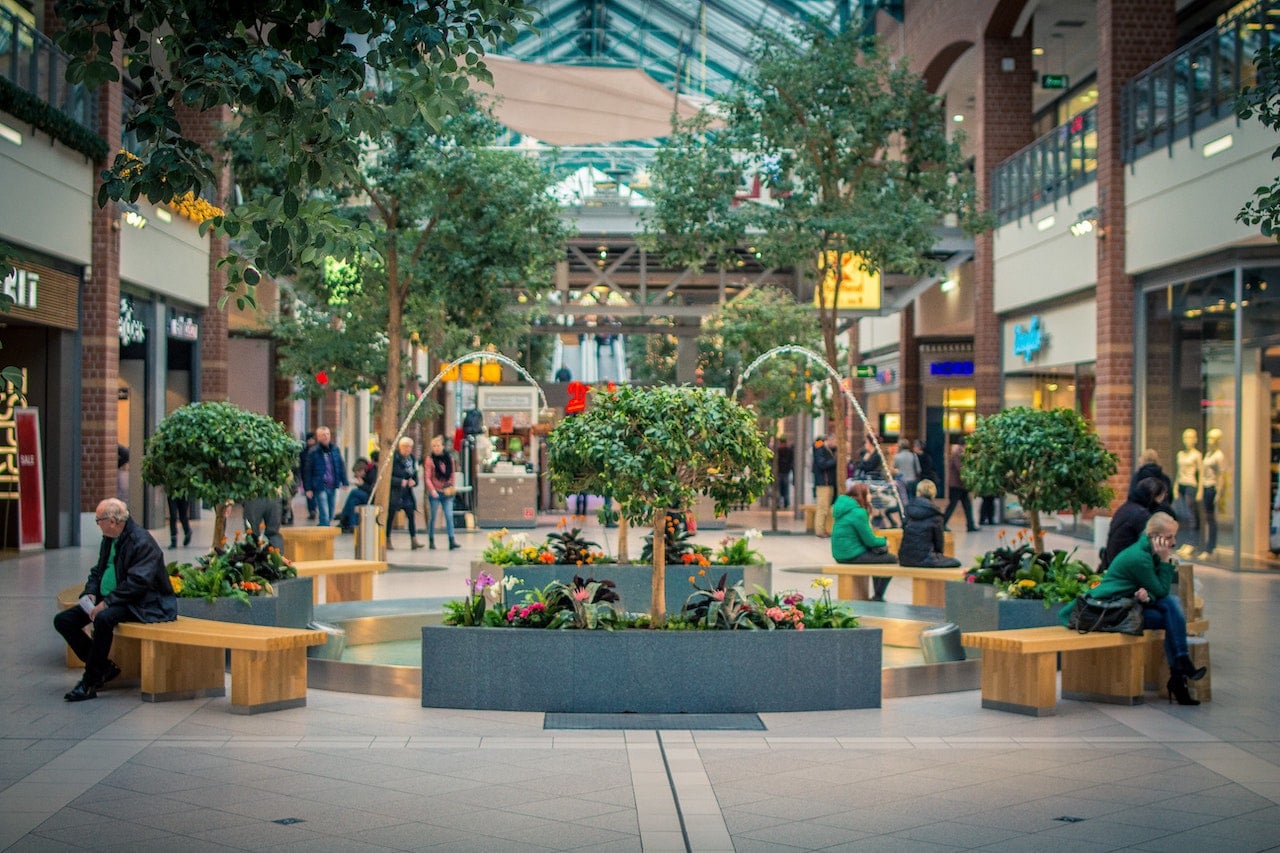The retail landscape is constantly changing, and retail companies as well as landlords have to stay on top of current trends in order to stay competitive with their retail spaces. This is especially due to shifts in shopping trends, particularly with e-commerce impacting the industry.
To put things into perspective, retail sales in the U.S. grew 4% overall in 2018, and e-commerce sales went up to 14.3% of the market share for retail sales. That is up from 12.9% in 2017 and 11.6% in 2016.
While there is the convenience of shopping from home, at the click of a few buttons (especially if you are all set up with an Amazon Prime account), people will always have a social desire to get out of the house to be among their peers spending their hard earned dollars in person. Additionally, before making a purchase, there is an advantage to feeling the product and asking questions directly with a retail representative. Due to these factors, traditional retail and shopping centers still draw significant numbers despite evolutions from the preexisting retail models. For example, this past holiday season was the best in 6 years for retailers with 5.1% growth year-over-year in holiday sales.
Brick-and-mortar stores, shopping malls, and retail centers are consistently showing resilience by adapting to new consumer habits. This is shown by the new tenant mixes found in shopping centers around the country: trendy restaurants paired with fitness centers, medical offices, and traditional mom & pop shops are still drawing many people into their businesses.
We asked commercial real estate experts specializing in retail: What uses are retail landlords looking to today to fill vacant retail space?
Landlords are looking for the 5 new “F” words:
Food
FitnessFunFurnishingsAnd“Ph”ysiciansAnd any retailer that can provide “frictionless” commerce!”
Beth Azor, President, Azor Advisory Services
Depending on the size of the spaces and the type of shopping center, the uses can vary. Overall, the use of vacant retail space has shifted to more experiential uses. For example, fitness has been a beneficiary of some big box vacancies that would otherwise not be considered in the past.
F&B is also a strong option to fill space and in some cases acts as an anchor. Medical uses aren’t necessarily experiential but can absorb larger spaces and typically sign longer term leases because of the investment that goes into building out a medical facility.”
Danny Diaz, Senior Associate, CBRE
As a Landlord you’re always looking ahead to try to mitigate risk and find as “recession proof” of a business as possible.
Unique restaurants and QSR’s (food food food), Medical and Fitness are 3 categories that I’ll always run thru for any vacancy. Experiential retail (in the right market) is always a draw as well.”
Gabriel Gonzalez, Senior Leasing Director, Regency Centers
With the increasing growth of e-commerce, retail leasing has evolved into experiential uses such as restaurants, fitness, entertainment (movie theaters, bowling, etc.), the always necessary medical (especially in South Florida) and Home Goods/Furniture stores.
As a landlord agent, these are the first type of uses that we explore to fill a vacancy in today’s retail environment. These types of businesses provide landlords with a greater sense of security in today’s changing economy. ”
Daniel Pou, Leasing Director, Horizon Properties
“Today many landlords of traditional retail properties are getting creative leasing space to combat stagnating vacancy. I think it helps when landlords pay close attention to what the demand is in the market and try to adapt. For one example, in some markets we’ve seen an influx of start-up, tech companies and even established businesses moving out of traditional office buildings in favor of more creative settings, like remodeled industrial warehouse and high-traffic retail space. The retail environment creates a unique experience for their employees in an urban setting, and also lends itself to experiential branding opportunities.
The great thing from the landlord’s perspective is these businesses may provide a more stable tenancy because they typically do not rely on traditional product sales to support rent in the same way a retail tenant does. That’s especially appealing at a time when consumer trends, seasonality and tourism can fluctuate dramatically in the short term. The consistent occupancy of an office tenant can also help stabilize the surrounding retailers by adding consistent traffic.”
Justin Diem, Associate Agent, Radius Commercial Real Estate Group


Leave a Reply